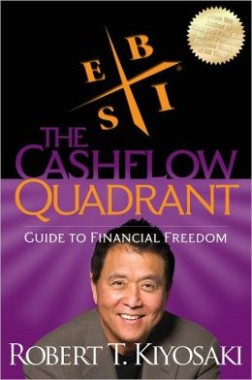

If yes, stay tuned this read will benefit you. And his best recommendation for moving up the personal and financial food chain: real estate investing.Do you also need to work every day to earn money? Do you also want to make more money with little or no work? And are you ready to improve yourself and your way of working to become rich? But it articulately makes the case for financial lifestyle change in a positive way. Like the earlier book, it is not a “how to” book and does not go into technical details on investing or such. If you were inspired by “Rich Dad Poor Dad” or otherwise want a good kick in the pants to get your viewpoint unstuck, this book is a good one. He views Es to be an artifact of the Industrial Age, and a left behind victim of the current Technological Age.

Kiyosaki advocates for re-thinking the standard “American dream”, vastly improving financial education in schools, and not being reliant upon government and pensions or 401(k)s to ensure a person’s financial future. Their money is enabling others to create wealth and share that wealth with the I. They may invest in real estate, businesses, concepts, or many types of income streams, but they themselves are not performing the day to day nitty gritty duties.


Is (Investors) are those who have their money work for them, and use the money of others to create wealth for themselves. Ideally, a B creates a system where the individual B does not even need to come into the office because of all the processes created with others running those processes. An understanding and deep-rooted comfort with processes and delegation is key to being a B. Ss tend to not give up control, and have difficulty expanding their business so that they truly develop as a B (Business owner).īs (Business owners) are the people who have made the jump to using the time, expertise, services, and loyalty of others to create wealth for themselves. He describes Ss (Self-employed) as people who have made a jump forward to directing their own destiny and self-reliance, but still trading their time for money. They directly trade their time for money, and they work for Bs (Business owners) who make money from the E’s efforts. Es also tend to be reliant upon others, complacent, don’t want to rock the boat, and not in control of their own destinies. Kiyosaki describes Es (Employees) as people who likely are following what they were told to do in school and by family: get a good job with good benefits and rely on pensions, 401(k) mutual funds, and home debt reduction to acquire some form of net worth and residual income. He makes many cases for moving away from the “left side” (E and S) to the “right side” (B and I), as well as along a progression from E to S to B to I. The book revolves around E S B I: Employees, Self-employed, Business owners, and Investors.
#Cashflow quadrant book review how to
“Cashflow Quadrant” further drives home the main points by describing the characteristics of people, income, and how to progress from standard ways of thinking to a lifestyle and priorities that align directly with the tenets of real estate investing. “Rich Dad Poor Dad” is likely one of the most inspiring books anywhere for many people considering making the transition to real estate investing. Robert Kiyosaki’s “ Rich Dad’s Cashflow Quadrant: Rich Dad’s Guide to Financial Freedom ” is the longtime best selling follow-up to the author’s “ Rich Dad Poor Dad: What The Rich Teach Their Kids About Money That the Poor and Middle Class Do Not! “.


 0 kommentar(er)
0 kommentar(er)
